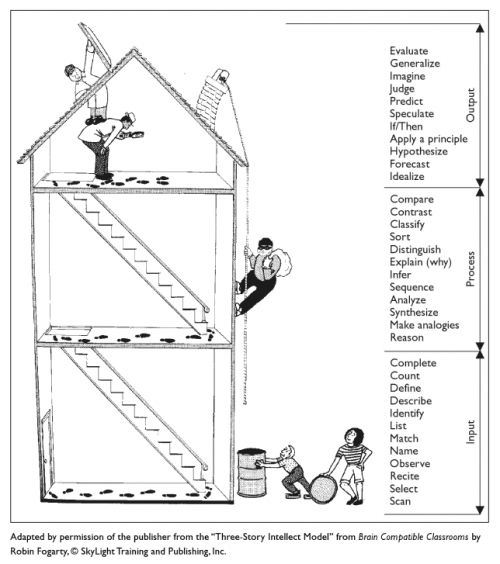Three Story Intellect Model
 I netflixed Rosencrantz & Guildenstern Are Dead this weekend, so I’m in a mood of rhetoric and reason. Above is from my Critical Thinking reading (“Teacher Behaviors that Enable Student Thinking”, Arthur L Costa_)_. The terms are a nice way to evaluate the complexity of test questions, and is comparable to Bloom’s Taxonomy. Apparently the metaphor is derived from an Oliver Wendell Holmes poem:
I netflixed Rosencrantz & Guildenstern Are Dead this weekend, so I’m in a mood of rhetoric and reason. Above is from my Critical Thinking reading (“Teacher Behaviors that Enable Student Thinking”, Arthur L Costa_)_. The terms are a nice way to evaluate the complexity of test questions, and is comparable to Bloom’s Taxonomy. Apparently the metaphor is derived from an Oliver Wendell Holmes poem:
The Three Story Intellect
There are one-story intellects, two-story intellects, and three-story intellects with skylights.
All fact collectors who have no aim beyond their facts are one-storymen.
Two-story men compare, reason, generalize, using the labor of fact collectors as their own.
Three-story men idealize, imagine, predict–their best illumination comes from above the skylight.
I disagree with Costa’s interpretation: ‘The third story of the house invites students to go “beyond the skylights” to speculate, elaborate, and apply concepts in new and hypothetical situations.’ Oliver Wendell Holmes isn’t talking about going above the roof, he’s talking about letting in enlightenment, epiphany and the muses. You know, that stuff you can’t teach in Critical Thinking, if at all.
If you’re selling yourself as a poet, it’s good to advertise your skylights, especially if they let Eratos in (they’re better at that than puddingstone).